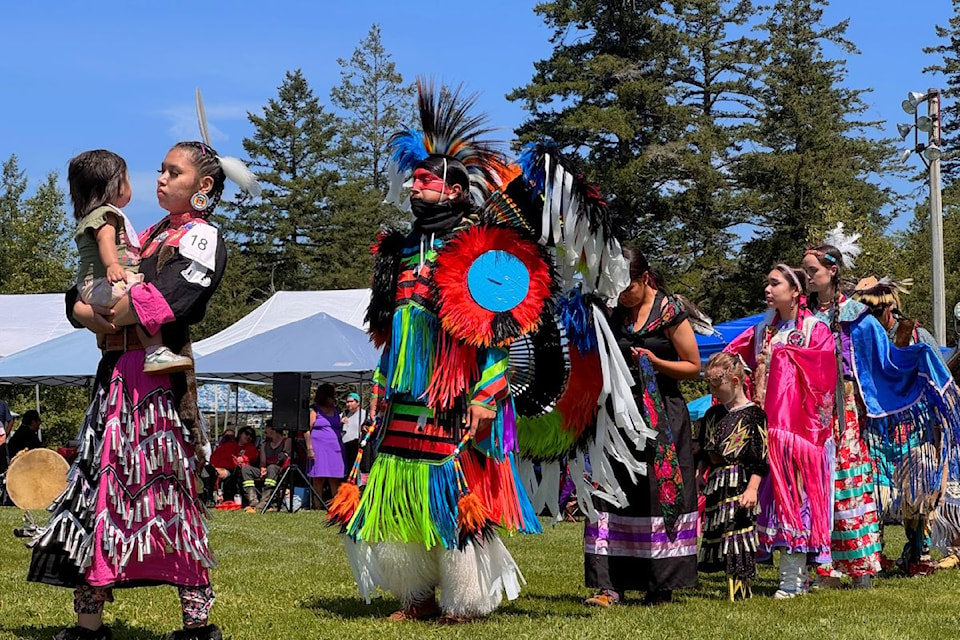The vibrant sounds of drumming and singing filled the air as the 30th annual Sampson Family Intertribal Powwow, “Honouring WƏTANMY,” concluded on Sunday, July 27, after three days of celebrating Indigenous culture and fostering unity.
Tribes from across Washington state, along with Cree and Mohawk relatives and various Vancouver Island First Nations, gathered in the field behind the LAU, WELNEW Tribal School in Brentwood Bay to participate in the festivities.
Over 2,000 people visited the powwow grounds throughout the weekend, drawn by the captivating dances, powerful drumming and the opportunity to connect with Indigenous culture.
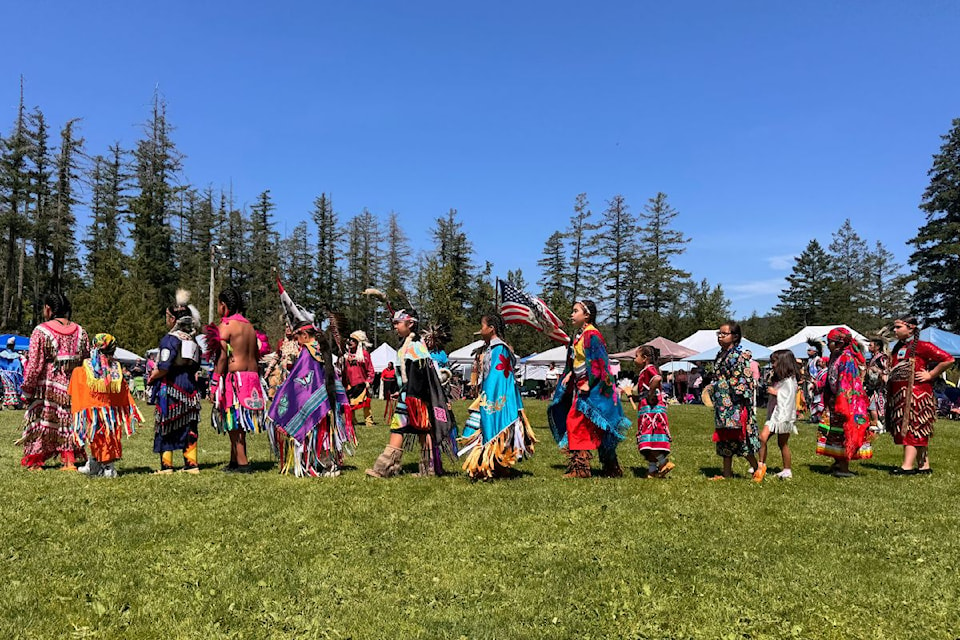
Twenty vendors offered a diverse array of art, accessories and food, adding to the vibrant atmosphere.
The Sampson family has hosted the powwow for three decades, naming it in honour of Alice “Wətanmy” Sampson whose roots extended from the WSANEC First Nation to Nez Perce tribe from Idaho in the United States.
This connection fostered a unique link between nations, ensuring a diverse and welcoming gathering at Tsartlip.
The final day of celebrations kicked off with a grand entry, a powerful and symbolic event that welcomed the community into the circle.
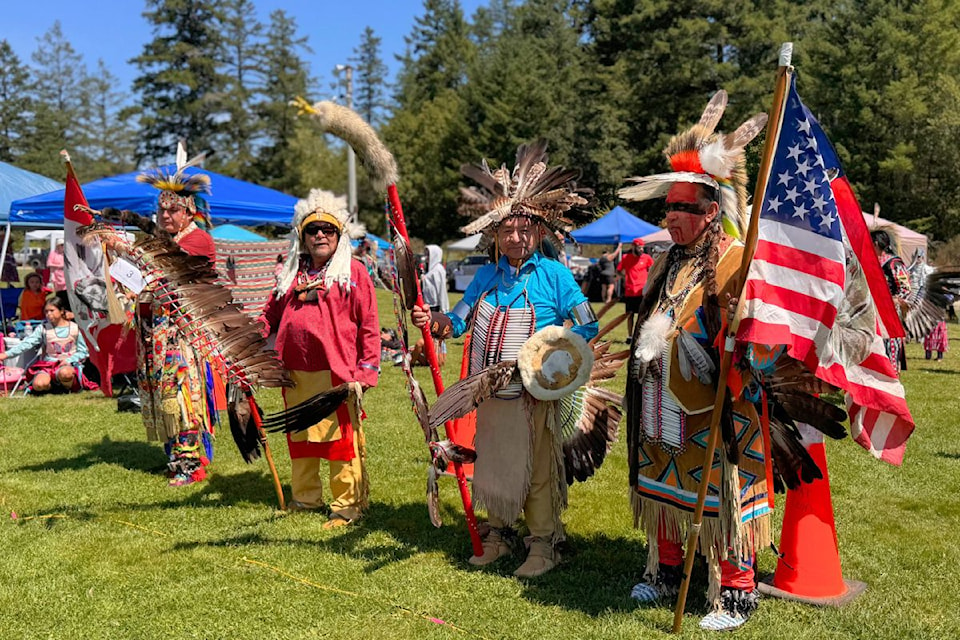
Four elders and veterans led the procession, proudly carrying the nation flags of both Canada and the United States, alongside two sacred staffs.
“The flags don't just represent Canada and the U.S.A.; they represent the First Peoples, the Indigenous peoples of this land on Turtle Island, and the significance of those sacred staffs," explained SXEDTELISIYE Renee Sampson, a great-grandchild of Wətanmy and a member of the powwow committee.
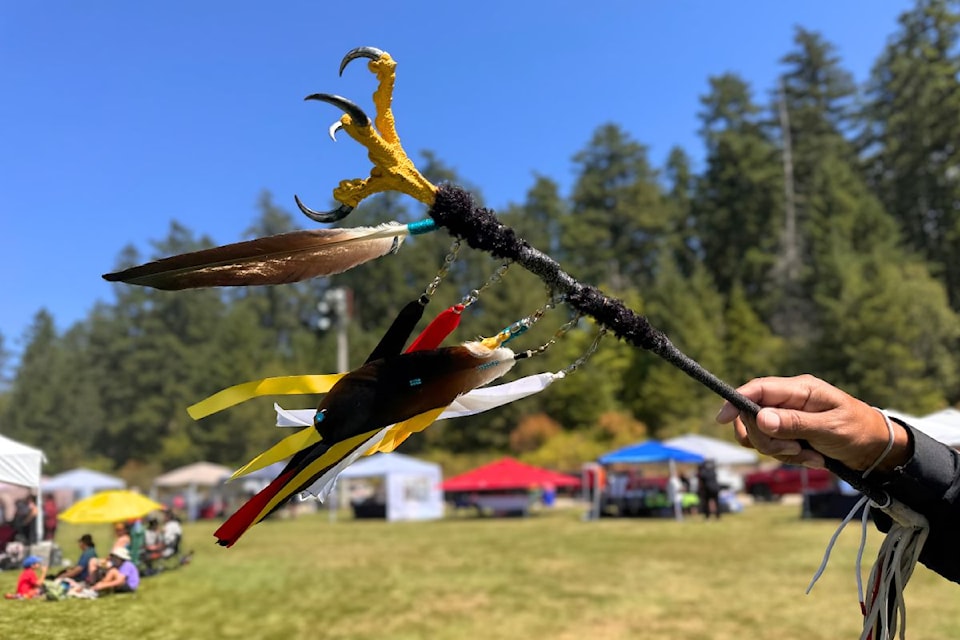
The sacred staffs, often Eagle staffs or other ceremonial staffs adorned with feathers, claws and sacred items, hold profound cultural and spiritual meaning within the powwow. They symbolize leadership, heritage and the deep connection to ancestors. Guiding the procession, they serve to honour the past and present while ensuring the continuation of traditions.
Beyond the vibrant celebration, the powwow also incorporated elements of initiation, particularly for young people and those entering new roles within the community. These initiations are often linked to specific dances, regalia and participation in ceremonies that signify a step into a new phase of life or a deeper connection to their cultural heritage.
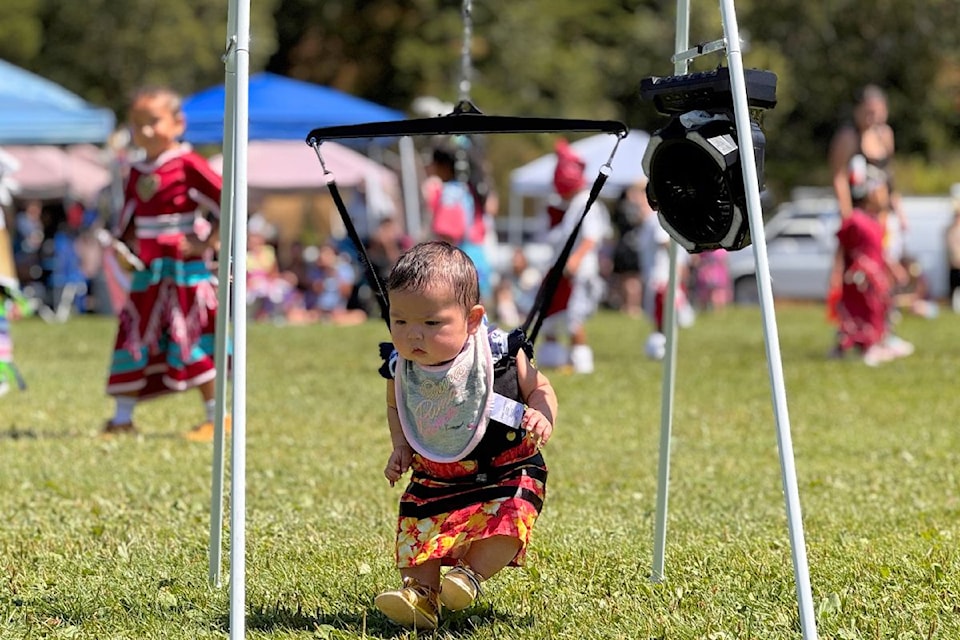
This was vividly showcased during the final day with traditional dance competitions across diverse categories, from the golden age of 55-plus, down to the "tiny tots" category for children aged five and under.
Even four-month-old Leighton, the youngest participant, exuded determination as she observed the vibrant movements around her.
Watching the children dance brought Renee Sampson back to her initiation into the powwow at the age of three.
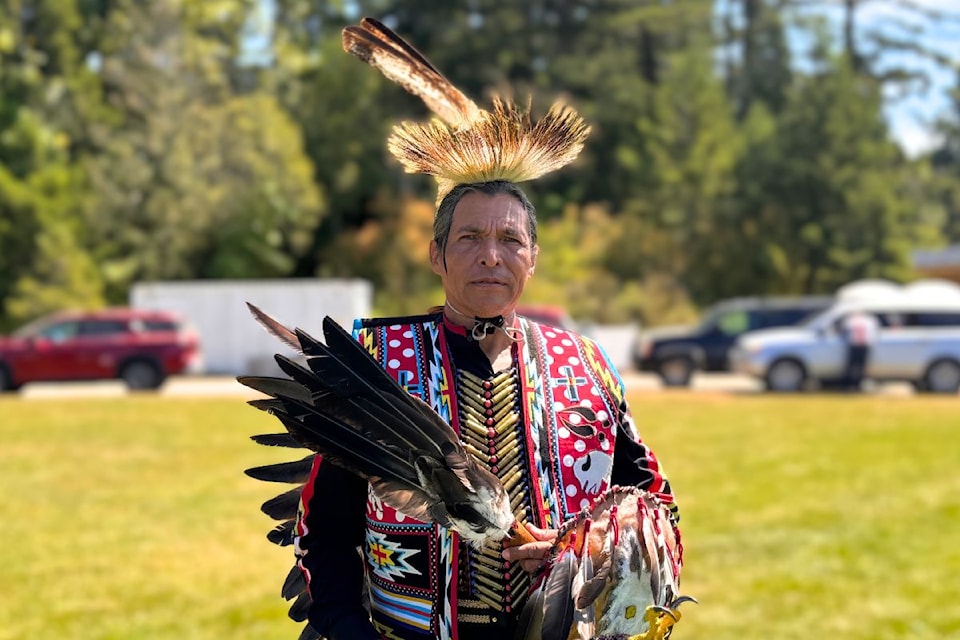
For Mark Sampson, the grandson of Wətanmy, his initiation occurred later in life, at the age of 54.
“Even though I’ve been dancing all my life, I was actually initiated just last year,” Mark shared. “However, my children were all initiated as soon as they could walk.”
Mark expressed his deep gratitude on behalf of his family for the continued success of the family powwow tradition, noting that it had been temporarily discontinued in the past due to the impacts of colonization.
“For us to come back strong and to keep practicing what we've always done and have other cultures, nations and races come together – it makes the powwow feel really good,” he said.
“It's the way it should be. We should all be doing things together.”
